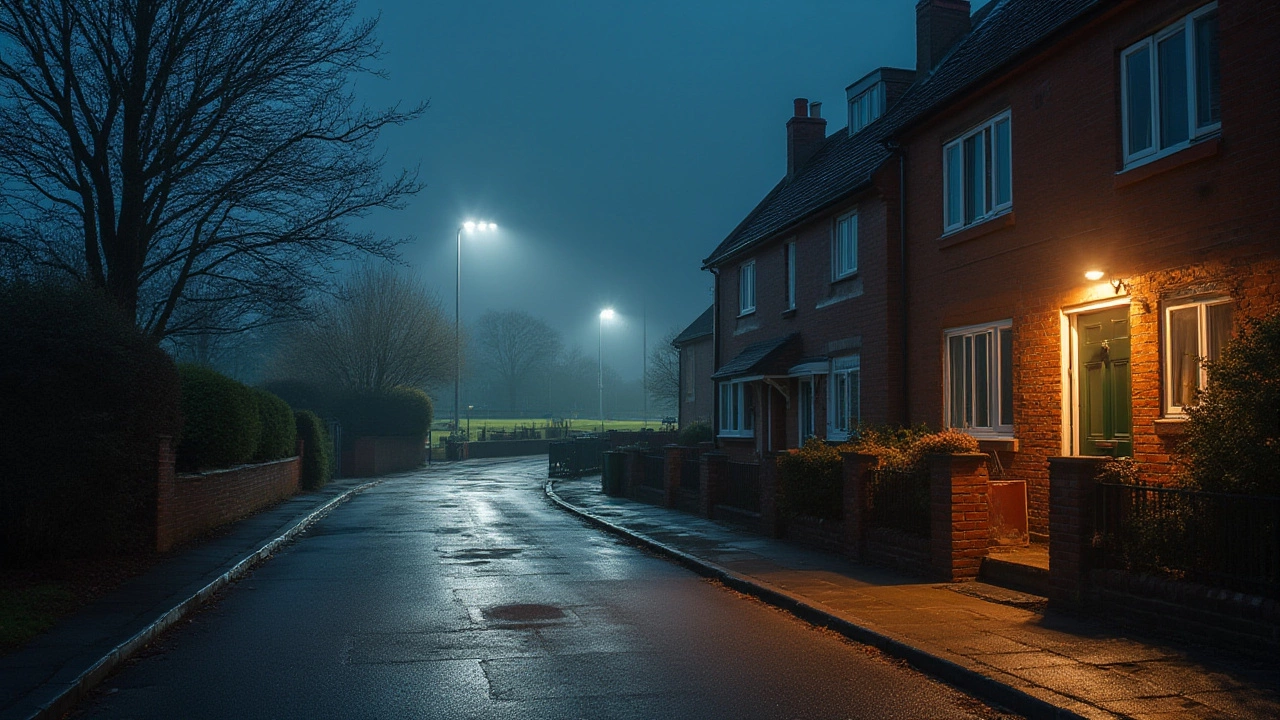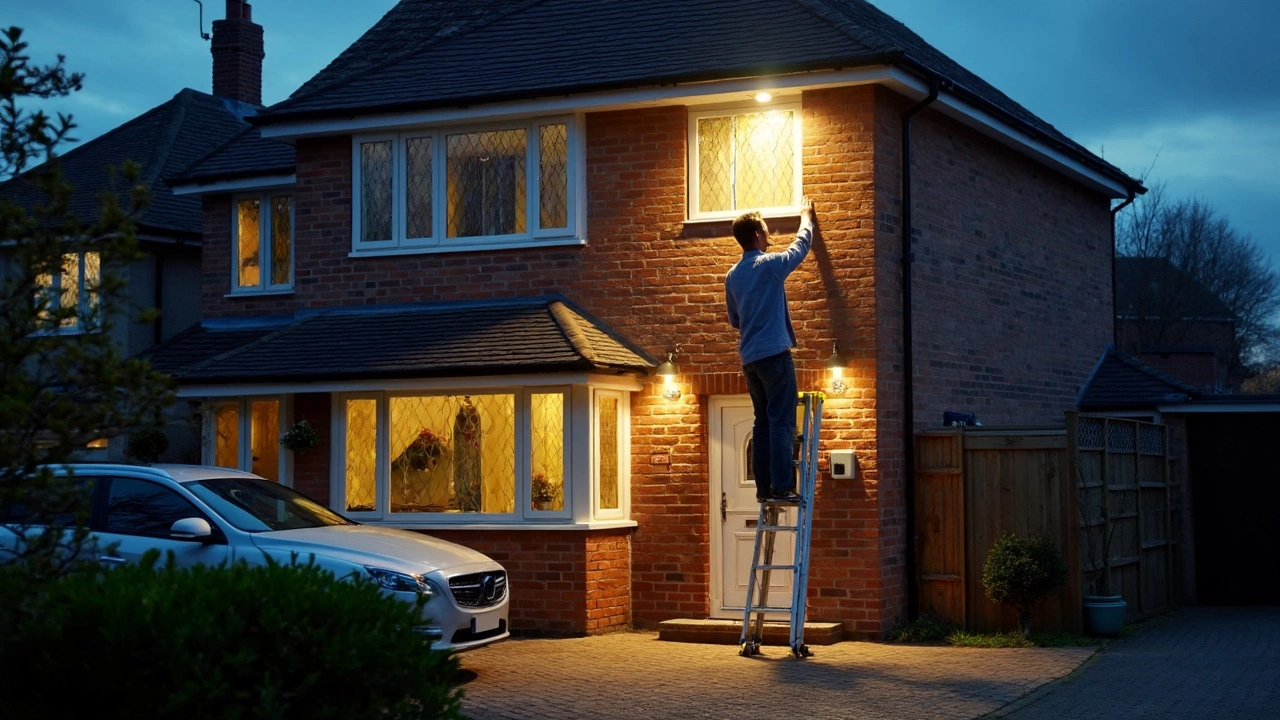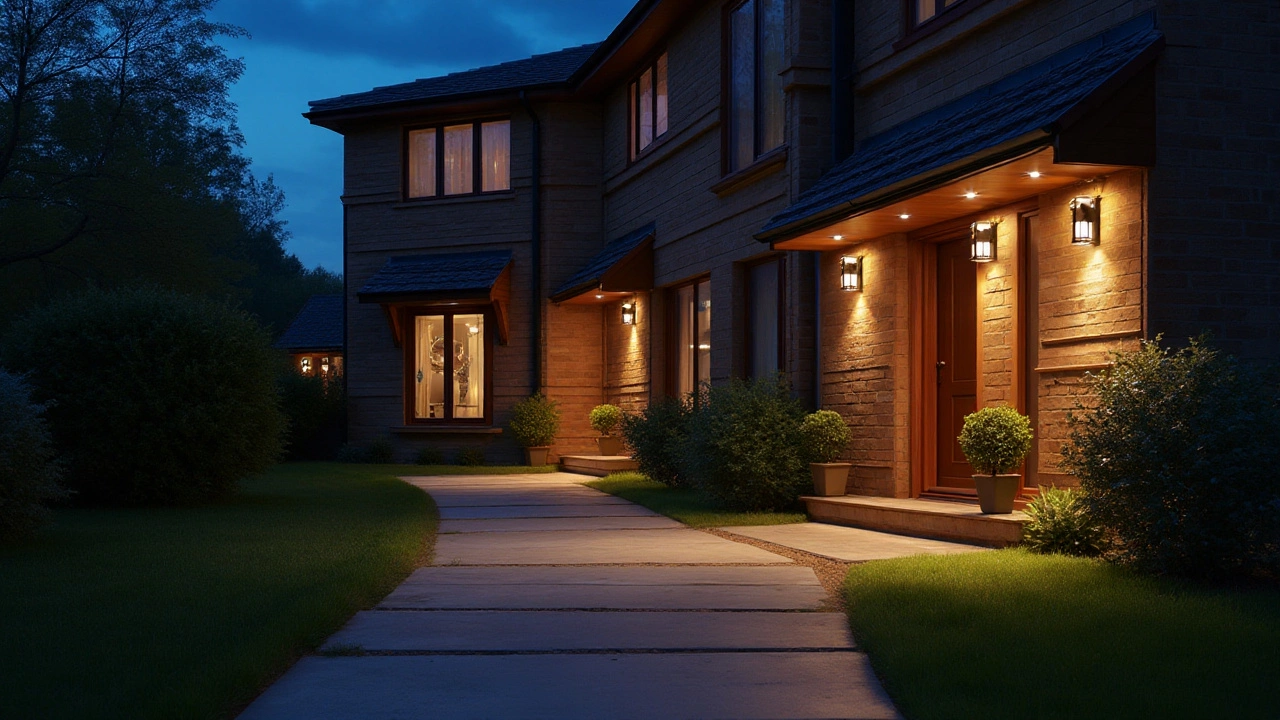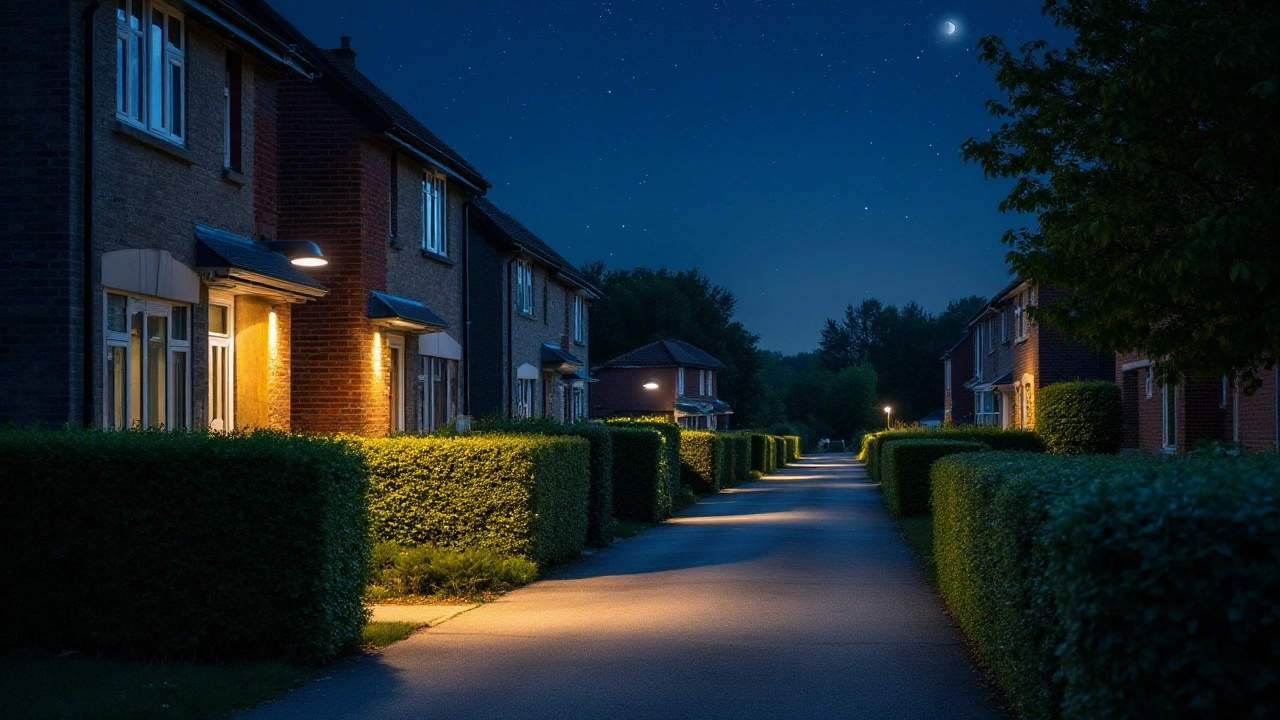Good outdoor lighting does more than make your garden look nice – it stops burglars, helps neighbours spot trouble, and lets you find your front door after sunset. In this guide you’ll get straight‑forward tips you can apply this week, without hiring a specialist.
Start by dividing the perimeter into zones: entry points, pathways, driveway, and dark corners. Each zone needs a purpose. At the front door you want bright, welcoming light that also shows faces. Along walkways a softer glow prevents trips. The driveway benefits from a floodlight that covers the whole area, and any hidden corners get a motion‑activated spot to surprise anyone lurking.
LED floodlights are the go‑to for security. They use little power, last years, and give a crisp white beam that cameras love. Pair them with a motion sensor so they only turn on when movement is detected – this saves electricity and creates a startling effect for intruders.
Path lights should be low‑profile and spaced about two meters apart. Solar‑powered versions work well if the yard gets half a day of sun, but wired LEDs give consistent brightness regardless of weather.
Wall sconces or porch lights add a welcoming vibe. Choose fixtures with a 270‑degree spread so the light reaches the door and the floor. A dimmable bulb lets you keep the glow soft at night but boost it for guests arriving after dark.
Step lights with built‑in sensors are ideal for stairs or raised decks. They turn on automatically when you step, reducing the chance of a stumble and keeping the area well lit without a permanent lamp.
When you buy, check the lumens rating, not just watts. A 10‑watt LED can produce the same light as a 60‑watt incandescent, but uses far less power. Aim for 700‑800 lumens for a front‑door floodlight and 200‑300 lumens for pathway fixtures.
Don’t forget the colour temperature. A cool white (4000‑5000K) looks more “industrial” and is better for security because it shows details clearly. Warm white (2700‑3000K) feels cozy for patios and garden seating areas.
Integrating lights with a smart hub lets you control them from your phone. You can set schedules, get alerts when motion triggers a floodlight, and even link the lights to your security cameras so the camera sees a well‑lit scene at night.
Maintenance is simple: clean glass covers once a season, check batteries in solar or motion units, and replace any flickering bulbs promptly. A clean lens ensures the sensor works correctly and the light stays bright.
Finally, respect local regulations. In most UK areas you can install lights on private property without permission, but if you’re in a listed building or a conservation area, check with your council first. Avoid shining lights directly into neighbours’ windows – a gentle downward angle keeps the light useful without causing complaints.
By mapping zones, picking the right LED fixtures, and adding motion sensors, you’ll have a lighting system that looks good and makes your home harder to break into. Start with the front door, add a driveway floodlight, then fill in pathways – you’ll see the difference instantly. Need a custom plan? Our team at Total Security Solutions can design a lighting layout that works with your existing security cameras and alarms, giving you full‑time peace of mind.

Floodlights and security lights might seem the same, but they're designed for different jobs. Here’s how they really differ, with all the facts and tips you need.

Curious about how high to set your security lights for the best coverage? This article explains the ideal height for different types of outdoor security lights, why it matters, and how it keeps your property safer. We break down practical tips and real-life mistakes to avoid. Learn how to outsmart both intruders and annoying false alarms, plus a few tricks that might surprise you. Get the facts before climbing that ladder.

Delve into the world of motion sensor lights, examining why they have become a staple in modern home security and convenience. Learn which brands and models stand out and what features are making waves in 2025. Discover some intriguing tidbits about the evolution of sensor technology and get practical tips for selecting and installing motion sensor lights in various settings.

Deciding whether to keep your outdoor security lights on or off can be tricky. While leaving them on might deter intruders, it also raises questions about energy consumption and light pollution. This article explores both sides of the debate, offering insights into effective strategies for maintaining safety without compromising on environmental impacts. Discover practical tips to enhance your home’s security using lighting efficiently.